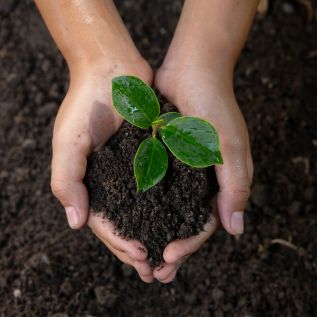
PFAS in Paper Straws: A Health Risk You Didn’t Know About
We all know that plastic straws are bad for the environment and not so good for people’s health, so most of us have made the switch to paper straws. Terrible straws that dissolve in liquid, seem counterintuitive to drink from them but… Is it actually healthier and eco-friendly?
The Daily Mail Report: A Wake-Up Call on Paper Straws
The Daily Mail recently reported that the ‘eco-friendly’ paper straws contain long-lasting and potentially toxic chemicals. A new study concluded in the first analysis of its kind in Europe. Belgian researchers tested 39 brands of straws for the group of synthetic chemicals known as PFAS (Perfluoroalkyl and Polyfluoroalkyl Substances).
What Are PFAS and Why Should You Care?
PFAS were found in the majority of the straws tested and were most common in those made from paper and bamboo. The synthetic chemicals are used to make everyday products from outdoor clothing to non-stick pans (also toxic and should not come into contact with your food) resistant to water, heat, and stains. However, they are potentially harmful to people, wildlife, and the environment.
How PFAS Affect Human Health: From Cholesterol to Kidney Cancer
The substances break down very slowly over time and can persist over thousands of years in the environment. This is a property that has led to them as being known as ‘forever’ chemicals. PFAS have been linked to a number of health problems including a lower response to medications, lower birth weight, thyroid disease, increased cholesterol levels, liver damage, and kidney cancer, to name a few.
The analysis revealed the majority of brands (69) contained PFAS. With different PFAS detected, in total paper straws were likely to contain synthetic chemicals, the most commonly found were PFAS although TFA (Trifluoroacetic acid) was also detected.
Ultra-short-chain PFAS, which are water soluble and may leach out of straws into drinks, the concentrations were found to be low and occasionally pose a risk to human health, however, PFAS can remain in the human body for many years and concentrations build up over time.
Environmental Impact: How PFAS from Paper Straws Leach into Nature
As the use of paper straws increases, exposure to PFAs also increases. As the waste of paper straws is discarded, the PFAS and TFA are leaching into the environment and harming it and the wildlife.
Alternatives to Paper Straws: Making a Healthier Choice
If you’re looking for alternatives to reduce your exposure to PFAS, consider using stainless steel straws or simply going strawless. Glassware is another option that allows you to drink directly from a cup or bottle without the risk of chemical exposure.
How to Reduce Your PFAS Exposure: Practical Tips
- Avoid using paper straws when possible.
- Opt for stainless steel or glass alternatives.
- Be aware of other products that may contain PFAS, like non-stick cookware.
- Advocate for stronger regulations on PFAS in consumer products.
Reducing Toxic Chemicals To Improve Health
In this day and age we are all exposed to so many toxic chemicals that accumulate in the body and cause havoc in the body leading to numerous chronic diseases and disorders. With the full assistance of a practitioner, our liver and lifestyle detoxification program is designed to assist you in lowering your toxic load across all spheres of your life, including your home, workplace, lifestyle, and body.
For more information on how to reduce your toxic load and free info and advice on optimising your health get your free root cause analysis!



